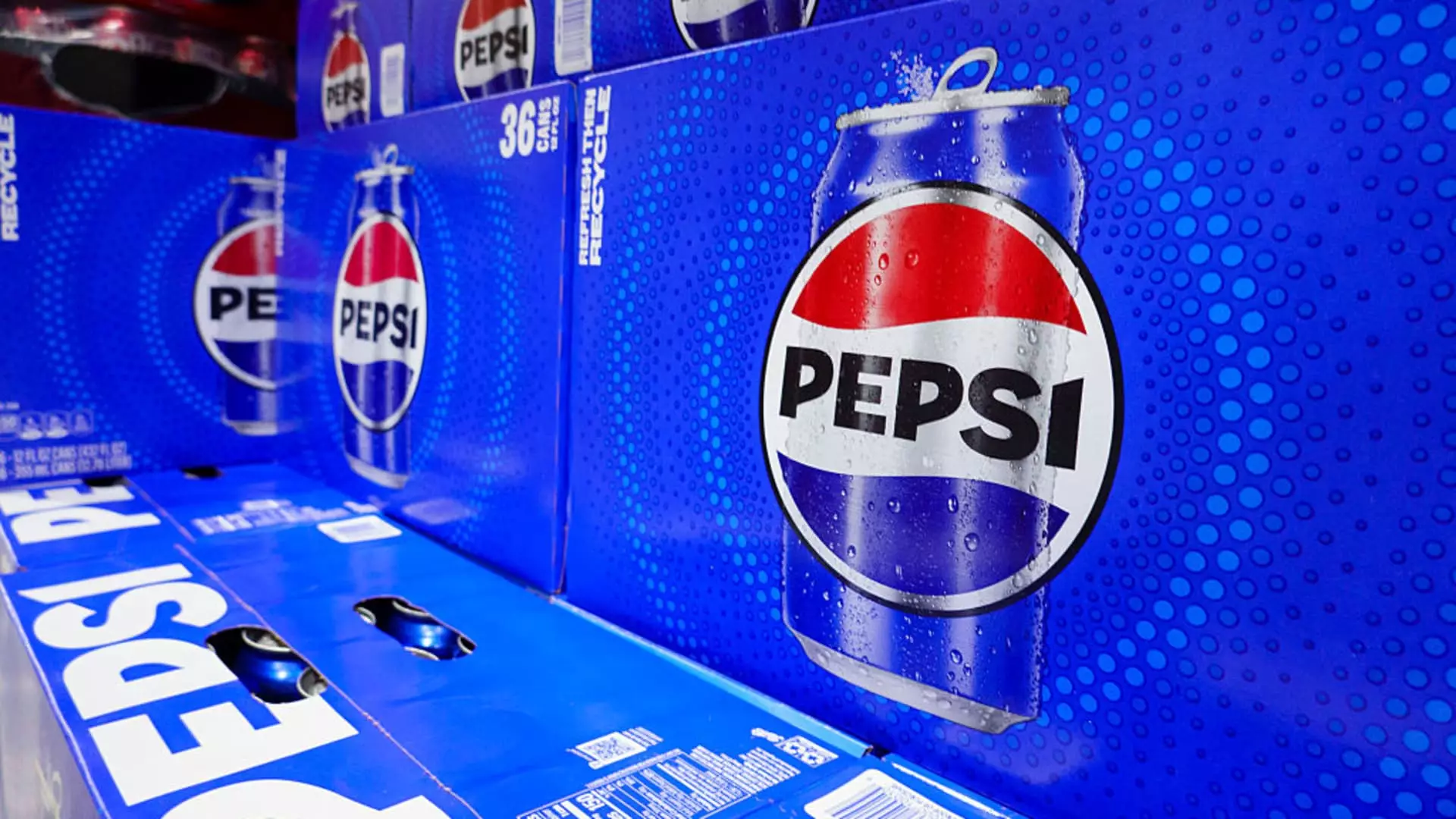PepsiCo’s recent earnings report paints an optimistic picture, yet beneath the surface lies a less rosy reality. The company beat expectations on paper, with revenue surpassing analyst predictions, and shares gaining over 6%. However, a closer inspection reveals that these numbers are more indicative of strategic optimism rather than genuine growth. The reported net income plummeted from over $3 billion to just $1.26 billion—a stark decline that raises questions about the true health of this beverage and snack giant. Adjusted earnings per share experienced growth, but this figure is heavily influenced by restructuring charges, casting doubt on the sustainability of apparent profitability.
While the topline figures might look promising, the underlying decline in volume—1.5% globally for food and stagnation in drinks—signals that consumer demand remains subdued. It’s important to recognize that gains in revenue, especially when driven by price increases rather than volume, are a double-edged sword that could jeopardize long-term growth if consumer loyalty continues to weaken. The fact that North American volumes are shrinking despite aggressive marketing and product relaunches suggests that Pepsi’s efforts might be merely temporary fixes, not strategic transformations.
Is Reshuffling and Cost-Cutting a Sign of Endurance or Desperation?
Pepsi’s management continues to double down on cost-cutting—shuttering manufacturing plants and pursuing efficiencies within logistics and distribution. These moves are often viewed as pragmatic responses in a competitive industry, but they also highlight the company’s struggle to sustain growth through innovation and market expansion. The decision to focus on core ingredients like potatoes and corn for beloved brands such as Lay’s and Tostitos indicates a reliance on familiarity to stave off decline, yet such tactics can only do so much in a rapidly evolving consumer landscape that leans heavily toward health-conscious and multicultural options.
This strategy signals a reactive rather than proactive stance; limiting expenditure on marketing and evaluating overlaps within divisions suggests the company recognizes that its existing models are not sufficiently dynamic. What remains to be seen is whether these internal efficiency drives will be enough to offset increasing competition from healthier snacks and craft beverage options, both of which are encroaching on Pepsi’s traditional territory.
Health Trends and Market Shift: A Threat or Opportunity?
Pepsi’s move into healthier snacking and partnership with multicultural brands like Siete Foods and Sabra underscores a recognition of changing consumer preferences. Yet, this pivot is fraught with challenges. While the company celebrates double-digit growth in Pepsi Zero Sugar, the overall volume declines in core soda products illuminate a broader trend: Americans’ shifting tastes away from sugary drinks and processed snacks.
In a liberal market that favors entrepreneurial innovation, Pepsi’s attempt to rebrand and relaunch iconic products is more a sign of survival than dominance. It’s a recognition that the industry’s old guard must adapt to a new ethos—less about marketing sugar-laden drinks, more about aligning with consumer health consciousness and cultural diversity. The danger lies in whether Pepsi can genuinely innovate or merely mimic competitors, risking irrelevance if it cannot lead in offering truly sustainable options.
Market Realities and the Illusion of Resilience
Ultimately, Pepsi’s current stance reveals a paradox: a company eager to project strength amidst undeniable challenges. The revenue forecast remains uninspired, projecting only low single-digit growth in organic revenues—a far cry from the aggressive expansion some shareholders might expect. The cautious outlook, compounded by tariffs and economic volatility, indicates that the company’s optimistic projections are more about managing perceptions than reflecting a robust growth trajectory.
Despite the sharp stock performance, the underlying fundamentals suggest that Pepsi must confront the hard truth: consumer demand for its core offerings continues to weaken, and superficial branding efforts are unlikely to reverse deeper market currents. The strategic emphasis on cost reduction and superficial product relaunches risks masking long-term vulnerabilities, rather than addressing them head-on.
In a marketplace demanding innovation, transparency, and resilience, Pepsi’s current approach seems more like strategic window dressing than a sign of durable strength. Without meaningful innovation that aligns with evolving consumer values, even the most impressive quarterly numbers risk being short-lived mirages in a rapidly shifting industry landscape.

